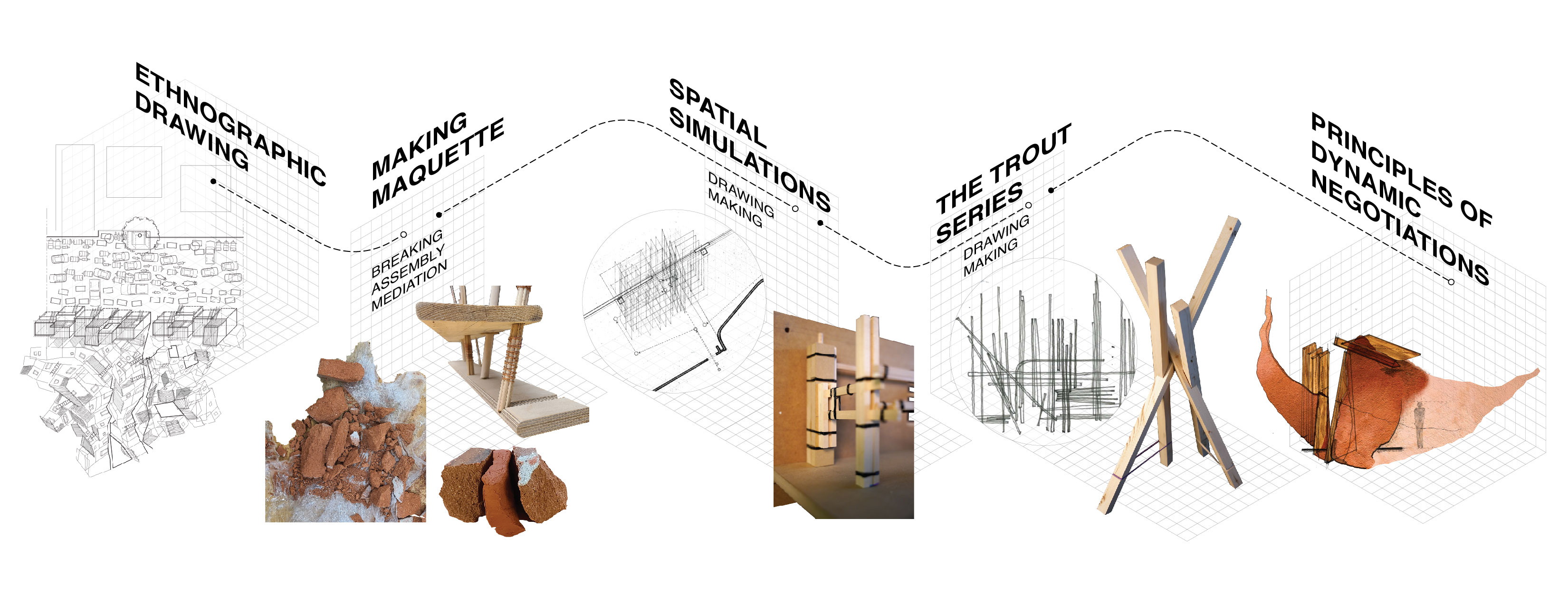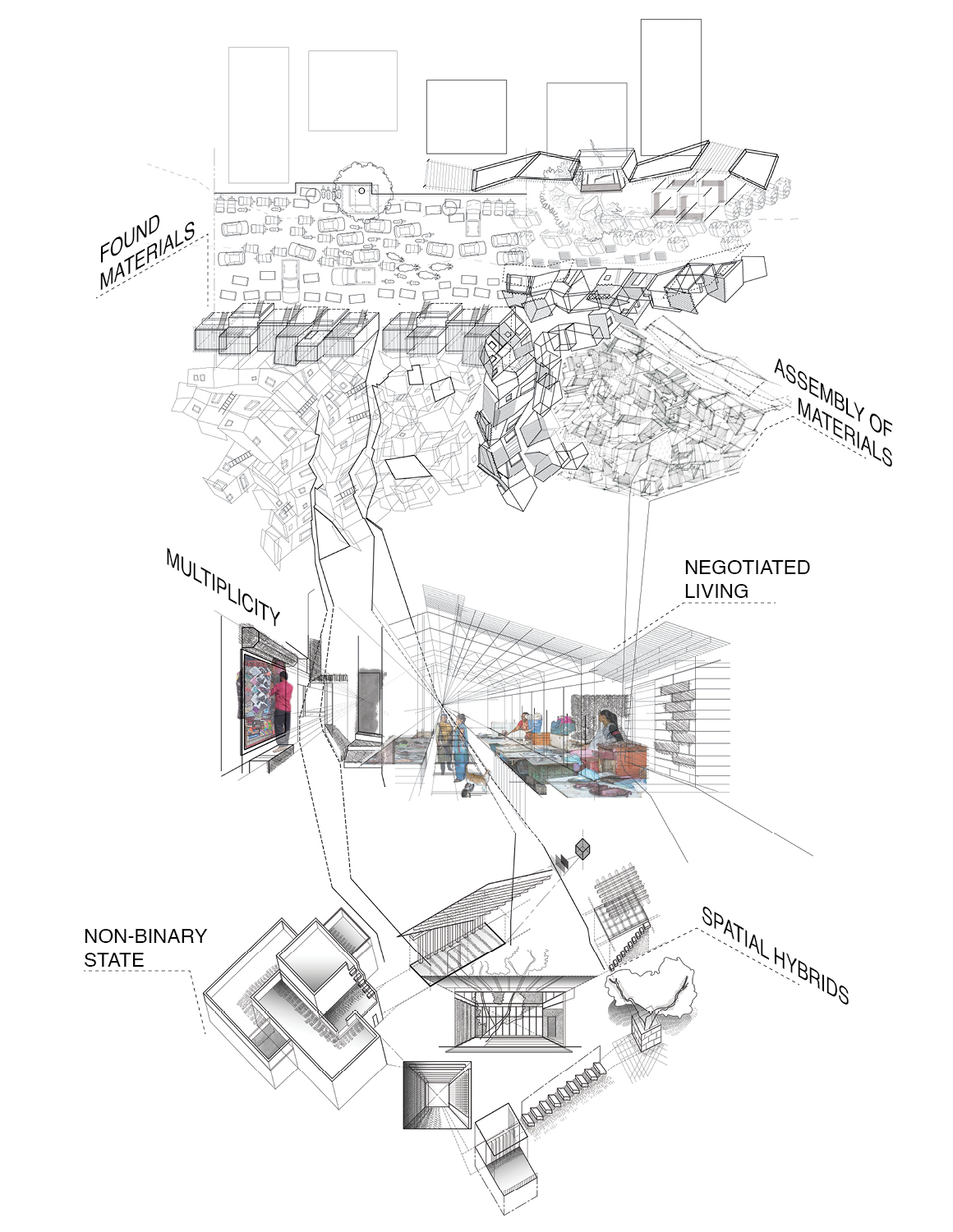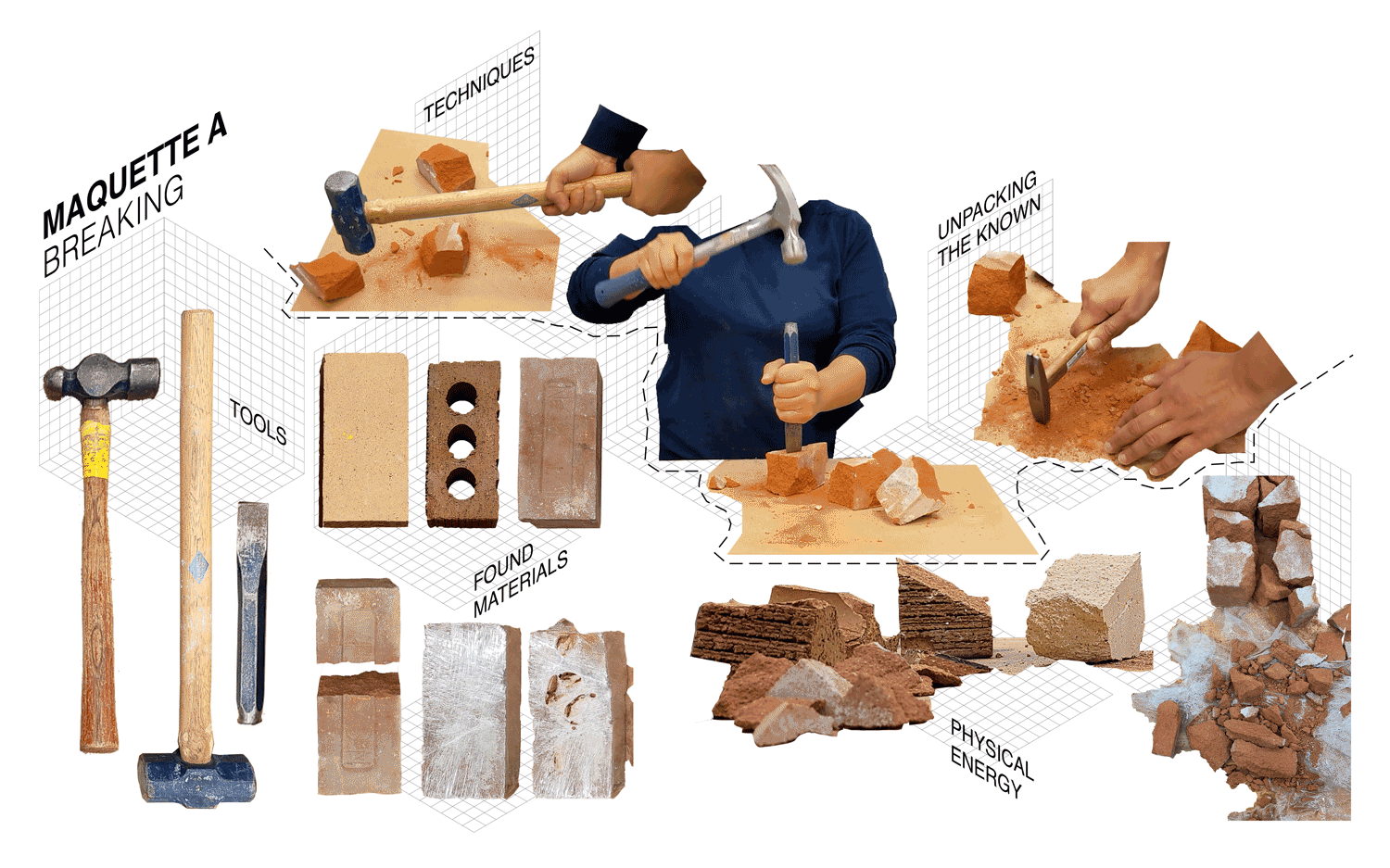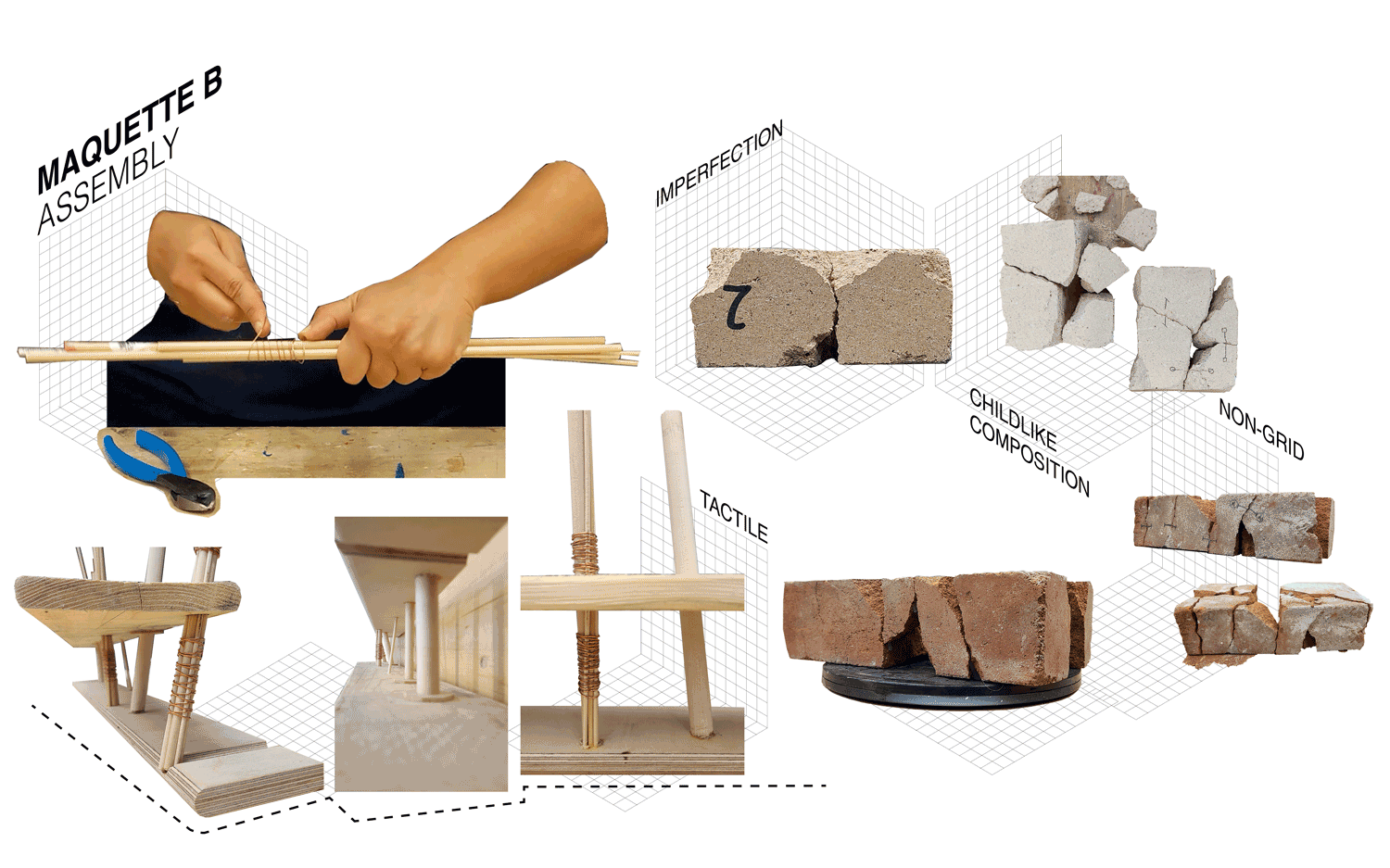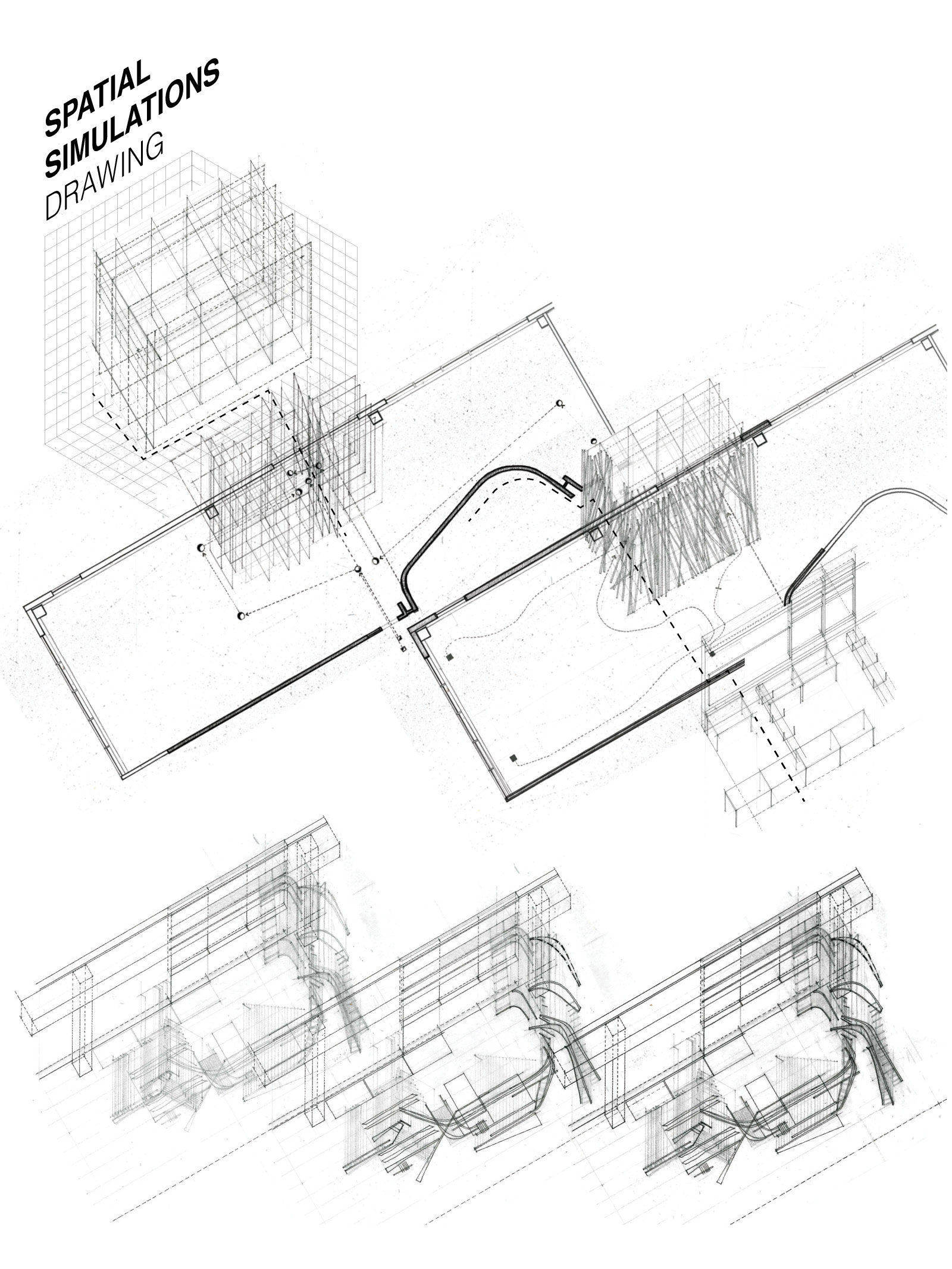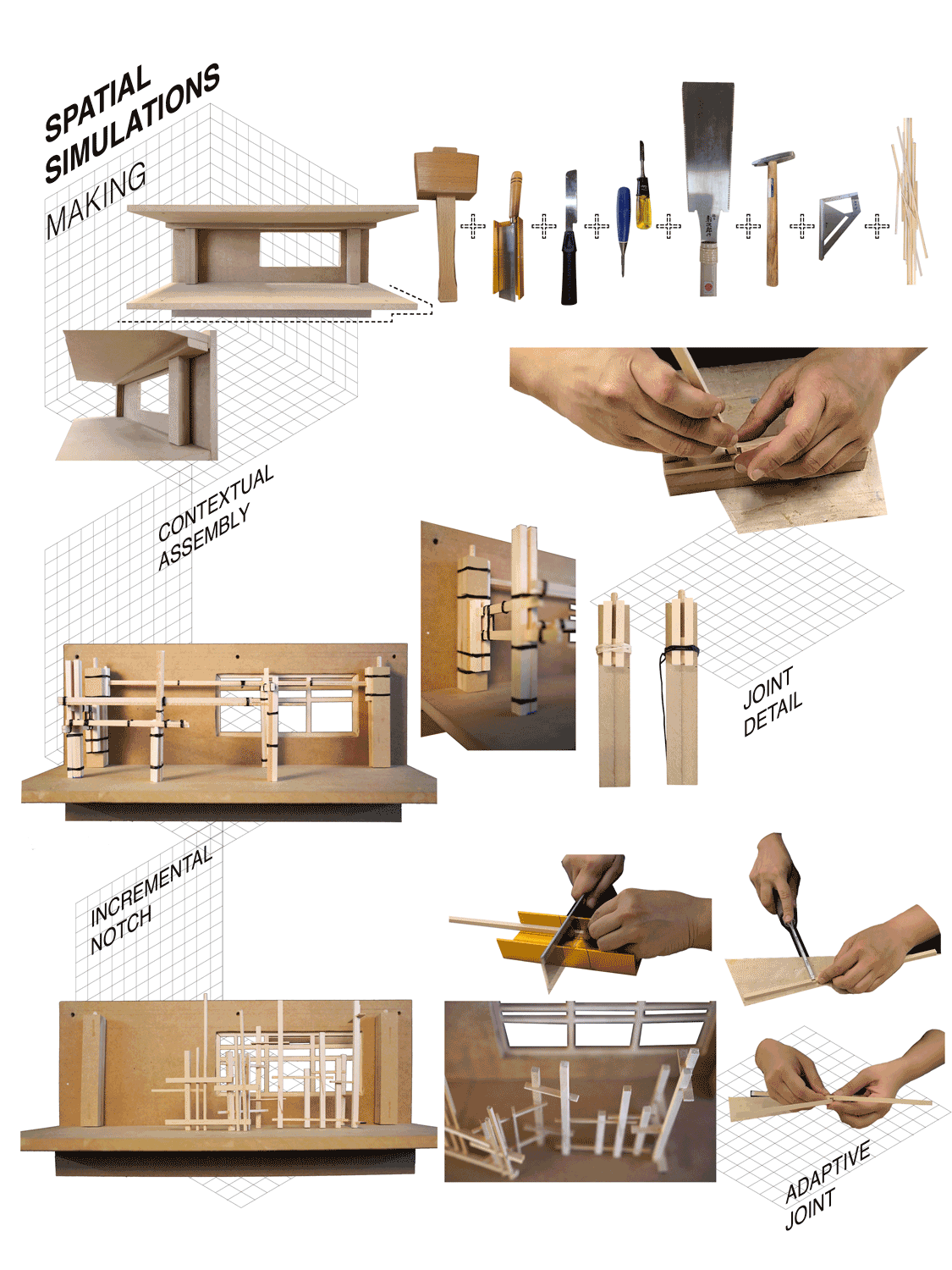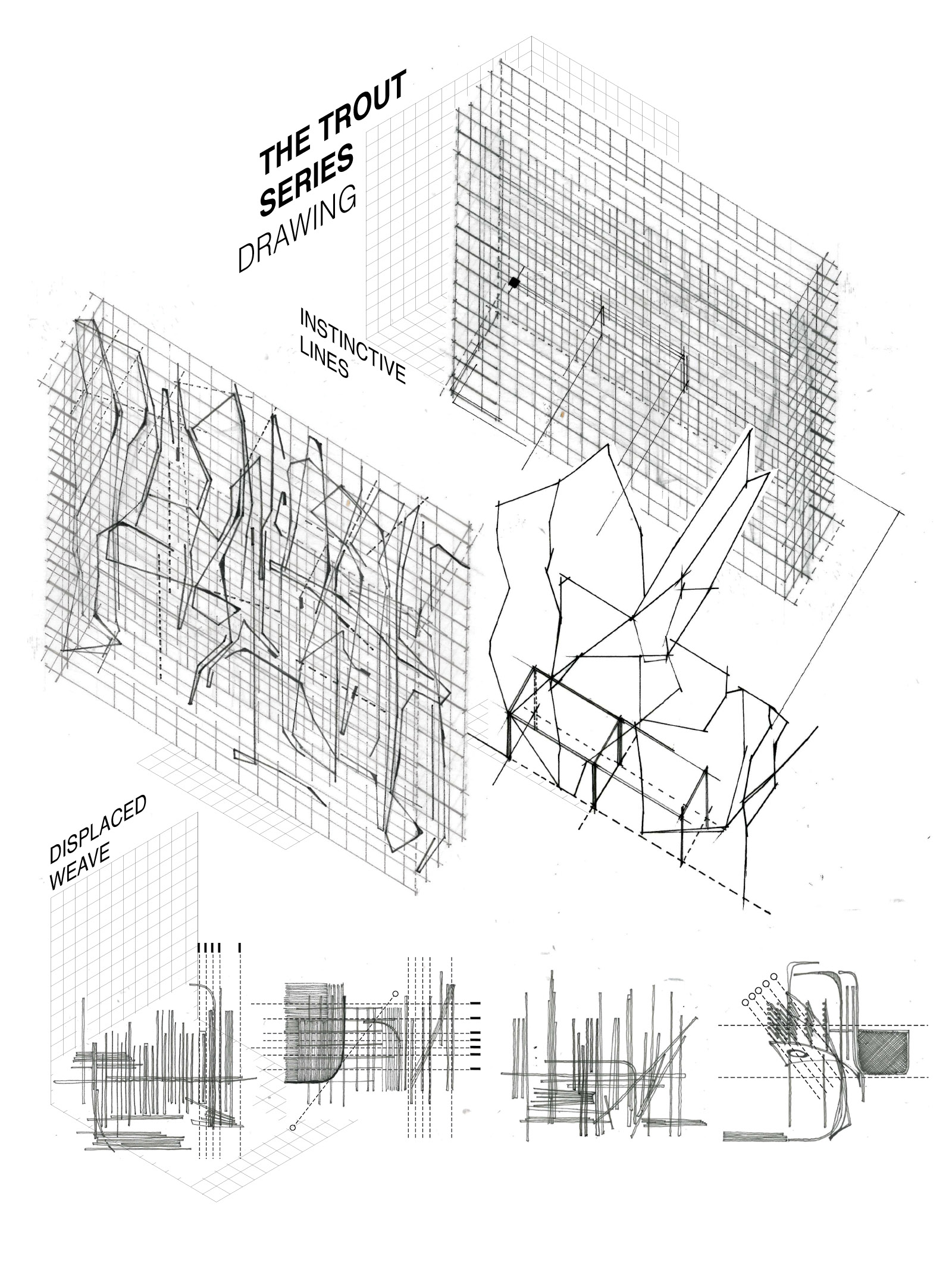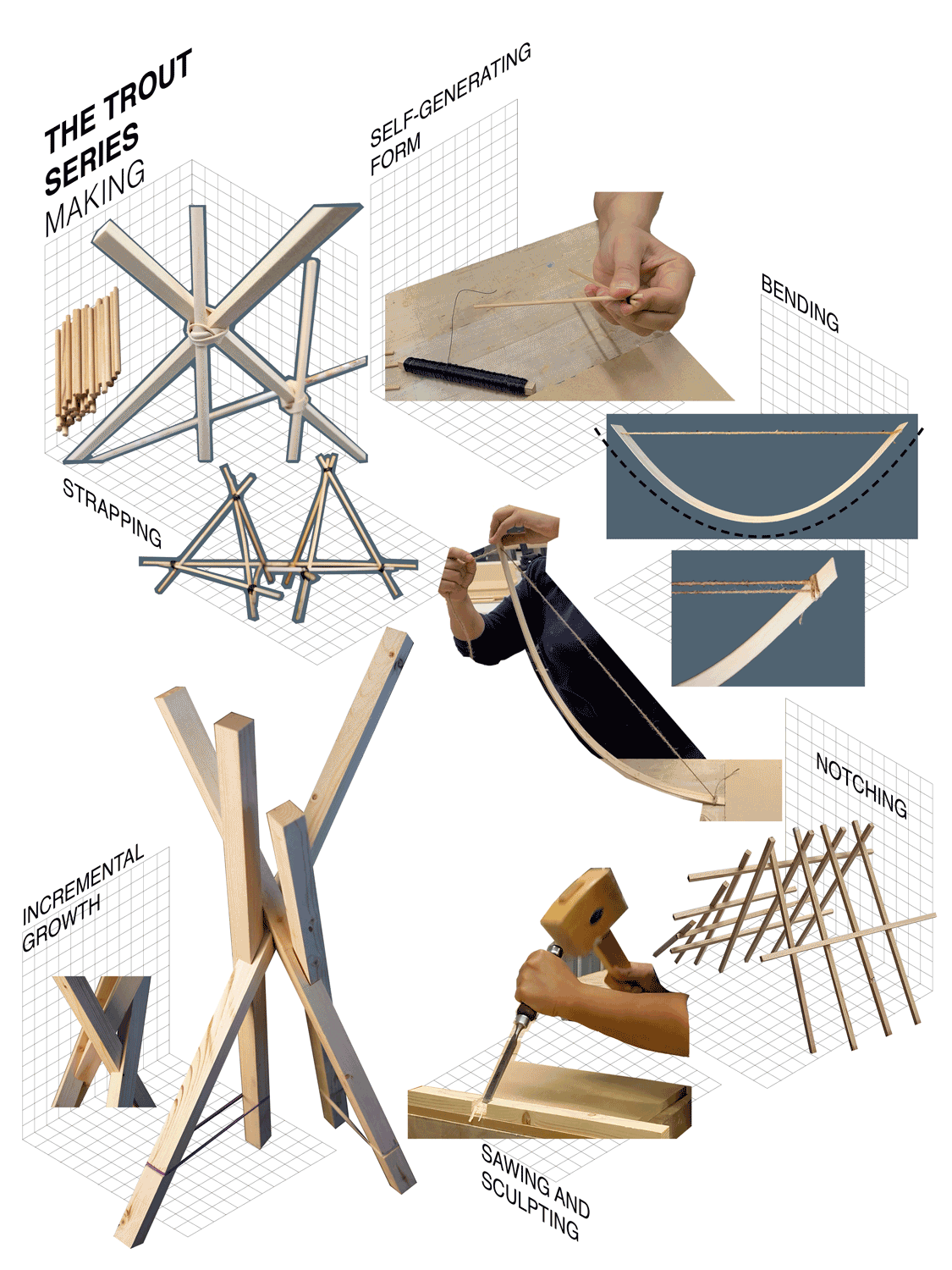MASTER OF ARCHITECTURE
Kavita Garg—AIA Medal for Academic Excellence & RAIC Honour Roll
![]()
Kavita Garg—AIA Medal for Academic Excellence & RAIC Honour Roll

About the Awards
AIA Medal for Academic Excellence:
For a graduate who displays excellence throughout their academic career.
RAIC Honour Roll:
For those students who have achieved high academic standing in the top 10% of their graduating class.
Dynamic Negotiations in Architecture: Design Research Methodology for Negotiated Identities
I utilized the thesis platform to negotiate between the formal nature of North American context and the transient/informal nature of India’s post-colonial urban context. Post-colonialism is informed by complexities of negotiated identities and is also my lived experience. Responding to my lived experience, I worked towards creating an intuitive creative process of making with materials and drawing on paper. The iterative work begins with Ethnographic Drawings, followed by Making Maquettes, Spatial Simulations, The Trout Series and concluding with Principles of Dynamic Negotiations. The processes are documented in a Leporello that unfolds the narrative of the research methodology as the paper unfolds. Each stage of the process helps conclude abstracted realizations, which lay foundations for the next stage.
The first stage - Ethnographic Drawing - helps showcase the lived experience through emotive drawings, which produce realizations of negotiated identities, assembly of materials, and spatial hybrids. These realizations are further investigated through the process of Making Maquettes. The Maquettes are generated to enter the problem from a new perspective, and help form new translations. Using ‘found materials’ and tools from the academic environment, different maquettes with their own actions were informed. These actions helped break into the next stages of investigation - Spatial Simulations and The Trout Series. Negotiated words such as stitching, tying, strapping, notching, cutting, screwing, joining, and bolting, were used to inform spaces, objects, material assembly, and line compositions. In these two stages, I responded to human’s most basic need of making by following the primordial, intuitive movements of ‘hand’ in the processes of designing.
The flow of thoughts is concluded as The Principles of Dynamic Negotiations, which - on an abstract level - help extract design through intuition. These principles de-stage the standardized notion of design principles, and emphasize hands-on making, local material integration, incremental building, and architecture that is responsive to contextual conditions. These principles also help generate reflexive identity, and individualism - inventing new certainties for oneself and others. The principles are open-ended, which creates a scope for adaptive attitudes in architecture discourse and design methodologies. Hence, helping one revisit the processes with which architecture is produced.
AIA Medal for Academic Excellence:
For a graduate who displays excellence throughout their academic career.
RAIC Honour Roll:
For those students who have achieved high academic standing in the top 10% of their graduating class.
Dynamic Negotiations in Architecture: Design Research Methodology for Negotiated Identities
I utilized the thesis platform to negotiate between the formal nature of North American context and the transient/informal nature of India’s post-colonial urban context. Post-colonialism is informed by complexities of negotiated identities and is also my lived experience. Responding to my lived experience, I worked towards creating an intuitive creative process of making with materials and drawing on paper. The iterative work begins with Ethnographic Drawings, followed by Making Maquettes, Spatial Simulations, The Trout Series and concluding with Principles of Dynamic Negotiations. The processes are documented in a Leporello that unfolds the narrative of the research methodology as the paper unfolds. Each stage of the process helps conclude abstracted realizations, which lay foundations for the next stage.
The first stage - Ethnographic Drawing - helps showcase the lived experience through emotive drawings, which produce realizations of negotiated identities, assembly of materials, and spatial hybrids. These realizations are further investigated through the process of Making Maquettes. The Maquettes are generated to enter the problem from a new perspective, and help form new translations. Using ‘found materials’ and tools from the academic environment, different maquettes with their own actions were informed. These actions helped break into the next stages of investigation - Spatial Simulations and The Trout Series. Negotiated words such as stitching, tying, strapping, notching, cutting, screwing, joining, and bolting, were used to inform spaces, objects, material assembly, and line compositions. In these two stages, I responded to human’s most basic need of making by following the primordial, intuitive movements of ‘hand’ in the processes of designing.
The flow of thoughts is concluded as The Principles of Dynamic Negotiations, which - on an abstract level - help extract design through intuition. These principles de-stage the standardized notion of design principles, and emphasize hands-on making, local material integration, incremental building, and architecture that is responsive to contextual conditions. These principles also help generate reflexive identity, and individualism - inventing new certainties for oneself and others. The principles are open-ended, which creates a scope for adaptive attitudes in architecture discourse and design methodologies. Hence, helping one revisit the processes with which architecture is produced.
